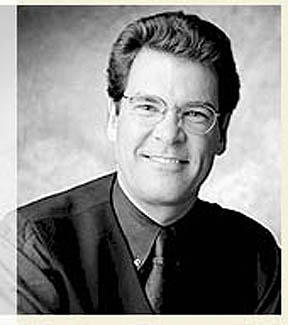Ever been at a Web site and just felt underwhelmed and not that impressed?
Unfortunately, its not just a few business Web sites that are doing a mediocre job of meeting our expectations.
Thats why a recent survey has branded their findings The Internet Death Penalty.
Michael Reene, CEO at Enterpluse.com, the Atlanta-based Web site services firm behind that survey, says most sites today provide adequate basics – current information, for example – but theyre woefully unprepared to reach the next level of user expectations.
Even worse, says Reene, those responsible for the site arent even aware that they are not meeting these expectations. This creates a huge gap between user expectation and reality for most companies Web presence. Our survey should be a real wake-up call for Corporate America.
Michael gave us his tips on getting a stay of execution.
Q: What is the Internet Death Penalty?
Reene: Were professionals around the Internet space and in watching large companies use the Internet and connect with their customers, it raised questions about how good I really have to be.
Do I, as a company, really have to worry about my Web presence?
Dont my customers and employees have to tolerate me anyway?
We really didnt know the answer, so we thought wed go find out. We surveyed very heavy business users people who use the Internet for both business and personal use, people who touched it at least once per week and often more.
We asked them, What do you expect when you travel the Internet and how do you behave based on what you expect?
The Internet Death Penalty is the surprising piece of that.
Fully two-thirds of the people, if they visit a Web site and dont have their needs met or are not pleased with the experience, wont ever come back.
They will go away forever. We were shocked. You know, we all expect a good experience at Amazon.com, etcetera.
But I was very surprised that Joes Mom and Pop Shop on Main Street in your town better do a good job or 2/3 of the people just wont deal with them.
Q: Are online companies missing opportunities if they dont keep an eye on usability?
Reene: Shockingly true.We were really surprised there was such a penalty a hidden penalty.
If people come to your Web site, are unsatisfied and never come back, most companies arent sophisticated enough to track that. The idea that people come and go away and you never know about it, you can live happily ever after and never know you had a problem.
Q: Give us some examples of what to stay away from.
Reene: The shopping cart is an interesting example.
The truth is, if you see a shopping cart on a Web site, its an indicator of a poor experience and a traditional, late-1990s Web site.
We asked users what they expect at a Web site. The features that people really demand that a Web site provide to them are that a Web site is accessible, easy to use and has 1-800 phone numbers that are easy to find.
A little deeper, though, is that the company listens. Users want companies to say who they are and what theyre doing.
For example, MarthaStewart.com asks you what youre shopping for. If youre trying to build a garden, the Web site will ask you How big? and Do you want vegetables? They ask you questions before they make recommendations. They listen.
The sites that are excellent are engaging and they help you figure out what youre going to do. The deeper capabilities are they remember you. Well all offer our e-mail or home address once, but its terribly annoying, but sometimes frequent, that you enter it and then you get an error message that may say zip code invalid.
If it comes back and the page is blank and you have to re-enter everything, youre just furious.
Or you enter your whole billing address, and then they ask you to re-enter the same thing for your ship-to address youre also annoyed.
The point is the Web site should remember you and not ask you the same question over and over. When you come back ten days or two years later, you expect it to still remember.
The Web site should transition you into a long-term loyal customer by reminding you, for example, that you can purchase a fathers day gift from them.
The five features are Access, Listen, Engage, Remember, and Transition. The first letters spells out A-L-E-R-T. Enterpulse.com will assess if Web sites do well in the categories of ALERT.
Q: Are these issues a big concern to the major corporation Web sites?
Reene: It is. These are smart people in corporate American doing good things around the Internet. The issue is the lesson has moved pretty quickly.
It used to be that if you had a pretty good Web site giving reasonable information and it was fairly fresh, then you were meeting the expectation.
Well, if you have that same Web site three years later, then youre pitifully referred to as brochureware. Youre embarrassed by it and you dont know when you went from being a great site to being embarrassing.
As we talk to CEOs, theyre all aware that the Internet can do more for their business than it is doing, but theyre not sure where they should go or how. There is not a high awareness as to what are the features of an excellent use of Internet technology.
Q: What resources can help companies close that expectation gap and develop better sites?
Reene: The error that most companies make is they design their Web site around themselves and the way they think. That is not the chemistry for a great customer experience. The companies who provide a great customer experience are designing for the way a customer thinks.
The full study findings can be found at www.enterpulse.com. The full audio interview with Reene is available for listening anytime at webtalkguys.com.
Dana Greenlee is a Web designer and co-host of the WebTalkGuys Radio Show, a Tacoma-based talk show featuring technology news and interviews. WebTalkGuys was just named the top Hidden Gem in PCWorld Magazines August 2002 issue. It is broadcast locally on KLAY 1180 AM Saturdays at 11 a.m. The show is also on CNET Radio in San Francisco, on the Web at www.CNETRadio.com, www.WebTalkGuys.com, via the XM Satellite Network, on IM Networks Sonic Box and on the Mobil Broadcast Network. Past shows and interviews are also Webcast via the Internet at www.webtalkguys.com.
WEB SITE SURVEY RESULTS
Key findings include:
– 89 percent of business people arent that impressed with the Web sites they visit.
– 66 percent rarely return to sites where theyve had a bad experience.
– 90 percent of those surveyed said they expect companies to respond to questions submitted via their Web sites within 24 hours, while 58 percent wanted a response within eight hours.
– 80 percent of visitors feel that business Web sites tend to be designed from an internal company perspective versus a user perspective.
– Half of those surveyed say they are proud of their companys intranet.
– When asked about the keeper of their company’s intranet, respondents were uncertain about which division of the company should own that responsibility.
– 95 percent of respondents say that it is extremely important that information they need to do their jobs be accessible, up-to-date, and easy to find on the Web. Yet nearly half said business Web sites are not always easy to navigate.







